A Foragable Coffee Alternative: Yaupon Holly
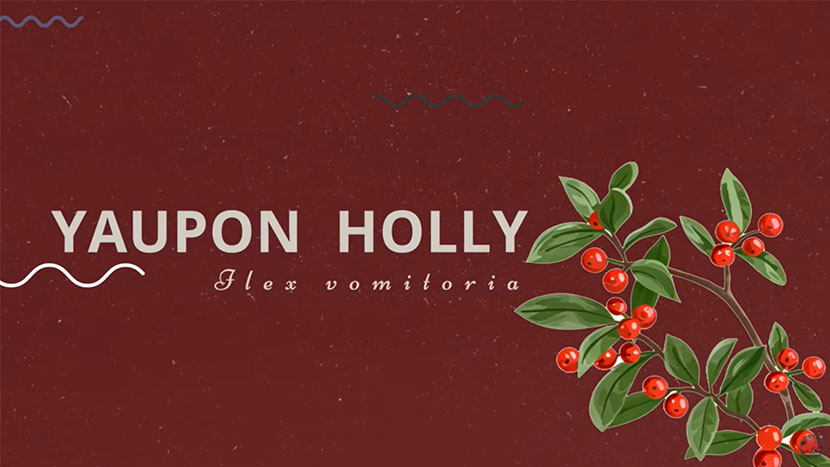
When you think about caffeine you probably think about coffee, and maybe black tea, but what if we told you that there might just be caffeinated plants right in your backyard that you could forage yourself? If you live in the Southeastern United States, this is likely the case. Yaupon holly (Ilex vomitoria) is a native plant that grows abundantly in forests, is quite popular in landscaping, and can replace your other caffeinated beverages.
What is Yaupon Holly?
Yaupon holly (Ilex vomitoria) belongs to the Aquifoliaceae family – the holly family. This family is made up almost entirely of the Ilex genus, holly plants, which have more than 400 pieces worldwide. Though there are many other holly plants in North America, yaupon holly is the only native plant in North America that contains caffeine!
Yerba Mate (Ilex paraguariensis), one of the other most popular caffeinated plants (especially in South America), also belongs to the holly genus but is only found South of the Equator.
These plants grow in a variety of habitats and do better in warm areas than the other evergreen members of the holly genus. They are hardy and grow easily which make them a great choice if you are looking for some native shrubbery for the Southeastern United States.
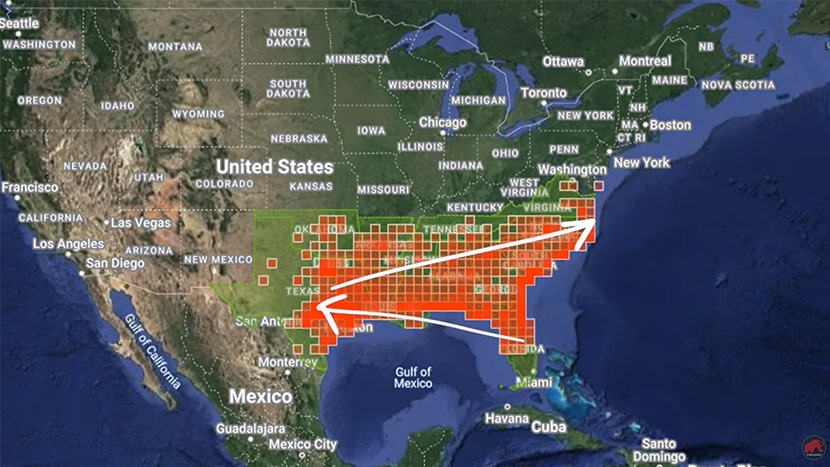
Yaupon Holly Benefits
A lot of people rely on caffeine to get their day going and yaupon holly can be a great alternative for that morning energy boost. As an added bonus, the caffeine from yaupon holly tea is a bit more of a slow release than coffee, so you are able to get your caffeine boost without having the crash afterwards. The leaves also have theobromine and antioxidants; Theobromine has been known to benefit inflammation and overall cardiovascular health.
Another benefit of this caffeinated shrub is that the harvesting can be much more sustainable than other caffeine drinks. Coffee and tea plantations are often made by clear cutting forest and planting monocultures, whereas you can collect these leaves from shrubs growing naturally in the understory of a local forest.
Ilex vomitoria is also an ecologically important shrub. Other than providing shelter and cover for animals in all seasons, a lot of wildlife eat the berries. Birds such as mockingbirds, sapsuckers, robins, grouse, turkey, and mammals like armadillos, bears and foxes all eat these berries. That being said, the berries can be toxic to humans so you should not eat them.
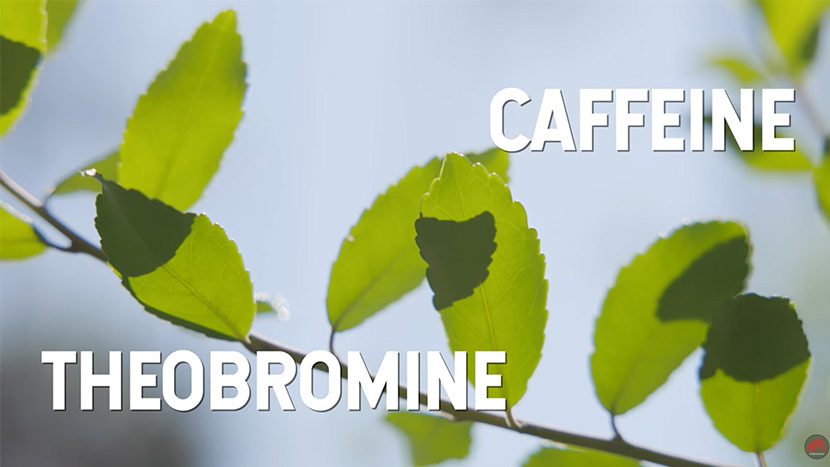
Historical Use of Yaupon Holly
Yaupon holly was, and still is, an important plant for Native American tribes from the region. As only a few examples, the Alabama, Cherokee, and Seminole all used this plant in traditional medicines and ceremonies. This plant was used in a variety of ways such as:
- The wood was used for arrows and fishing spears
- The bark used in medicine, such as treating sore eyes
- It was used as medicine to cure nervous tremors
- The plant could be prepared as a hallucinogen in ceremony
- It was boiled down to create the “black drink” – which earned the plant its name species of “vomitoria”
The black drink was a special beverage used for various ceremonies but largely as an emetic – to induce vomiting and as a laxative in order to help purge the body. Different cultures had distinct traditions around when the black drink was used, and who was allowed ot drink it, but the use of yaupon holly was ubiquitous. In fact, there is evidence that this plant was cared for, traded, and propagated, probably even extending its native range.
Foraging Yaupon Holly
Foraging plants to eat and/or make into teas and tinctures is an important part of learning outdoor skills, but can also just be a fun way to spend the afternoon outdoors. The good news is, there are many edible plants that are easy to identify, forage, and add into your culinary rotation. If you live in the Southeastern USA, yaupon holly is a great plant to collect and make into tea!
As a quick reminder, you should only forage the leaves as the berries are not edible to humans and can be toxic if too many are eaten – they also don’t taste good, so that helps!
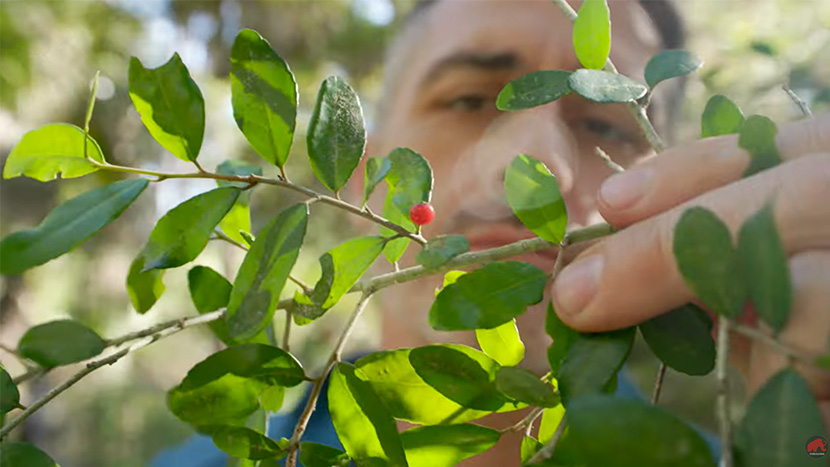
Identify yaupon holly
The first step to being able to forage something is finding it out in the wild. If you are within its native range, finding yaupon holly should be quite easy.
Here are the key things you need to know for yaupon holly identification:
- They are small-medium height shrubs or small trees
- Their leaves are evergreen
- Leaves are bright and shiny green with a lighter green underneath, elliptical or oval, thick and leathery, and 1-2.5cm long
- Leaves are alternating with wavy edges on small shrub
- Bark is light white to gray with a purplish down covering the stems of younger plants
- Small flowers bloom in March-May and are greenish-white with 4 petals
- Male flowers grow in clusters and female flowers alone
- The females produce the bright red berries that are signature of many holly plants
Make Yaupon Holly Tea
After you have collected some leaves from the tree – about a handful will work for one cup of tea – you can dry them out by either baking them or even just lightly roasting them on a pan. You can then use them just like you would loose-leaf tea. Putting the leaves into hot water (just under boiling is best) and letting it steep. IN short:
- Collect leaves from the tree
- Dry
- Add to hot water (around 80 °C, or just under boiling)
- Steep
- And enjoy!
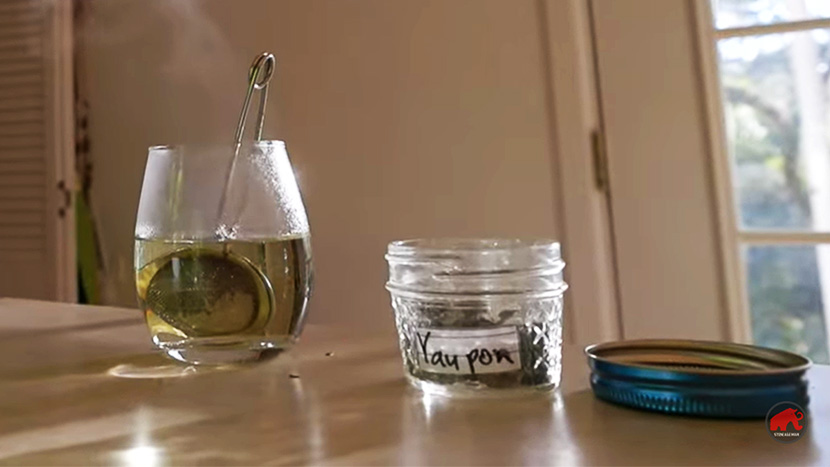
Yaupon holly is a really interesting plant that is historically and ecologically significant, and makes an excellent coffee replacement. This evergreen shrub from the holly family is the only caffeinated plant in North America. It grows abundantly in natural forests and is even popular in landscaping. So if you are in the Southeastern United States, make sure you look for it next time you are out and about, and maybe even collect some to make your very own yaupon holly tea!

